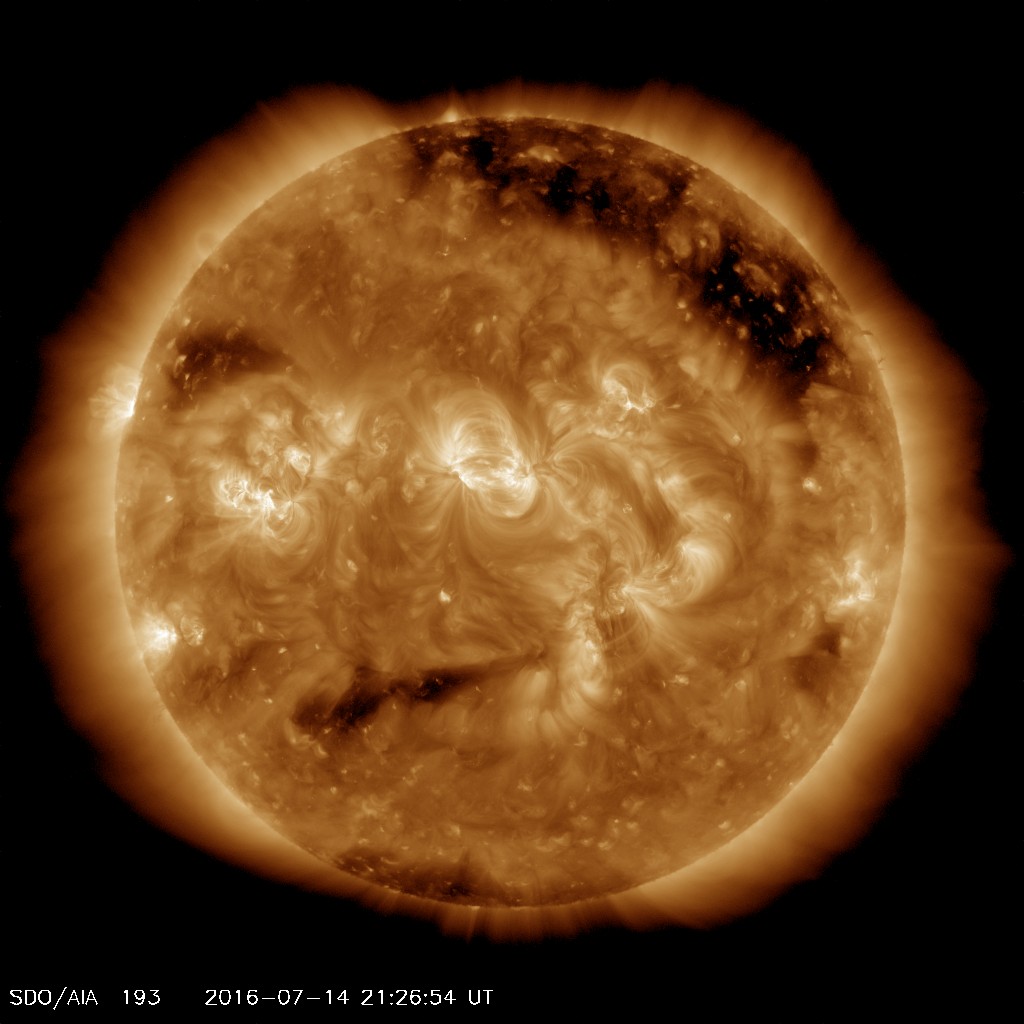The sun has been making some anxious faces lately — but you'd be worried, too, if a huge hole had just opened up on your head.
The sun's apparent nervousness crops up in photos captured over the past few days by NASA's Solar Dynamics Observatory (SDO); you can see the gorgeous images compiled into a video here.
The sun's "eyes" are actually active regions, which serve as launch pads for solar flares and the eruptions of superheated solar plasma known as coronal mass ejections (CMEs). And the anxious, crinkly mouth is a coronal hole, a relatively cool and dark region where the sun's magnetic field lies open to interplanetary space.
Material zooms away from coronal holes as part of the high-speed solar wind, which can cause geomagnetic storms here on Earth. Indeed, particles flowing from a coronal hole last autumn triggered powerful auroral displays, NASA officials said.
But the "mouth" is middling as far as coronal holes go; a much larger one is visible in the new SDO images as well, draped over the top of the solar sphere like a bad toupee.
The human brain searches hard for patterns and meaning in the data it analyzes, which explains why people may see a face in the sun or on Mars, a man in the moon, or Jesus Christ on a piece of toast. This phenomenon, seeing a recognizable shape in a random image, is known as pareidolia.
"The pareidolia is strong today #FaceOfTheSun," astrophysicist Karl Battams, of the U.S. Naval Research Laboratory in Washington, D.C., tweeted today (July 14), along with a photo of the "anxious" sun.
Get the world’s most fascinating discoveries delivered straight to your inbox.
The $800 million SDO mission launched in February 2010. The spacecraft's high-definition photos are helping researchers better understand the sun's magnetic field and solar activity, including how and why that activity varies over time.
Follow Mike Wall on Twitter @michaeldwall and Google+. Follow us @Spacedotcom, Facebook or Google+. Originally published on Space.com.





